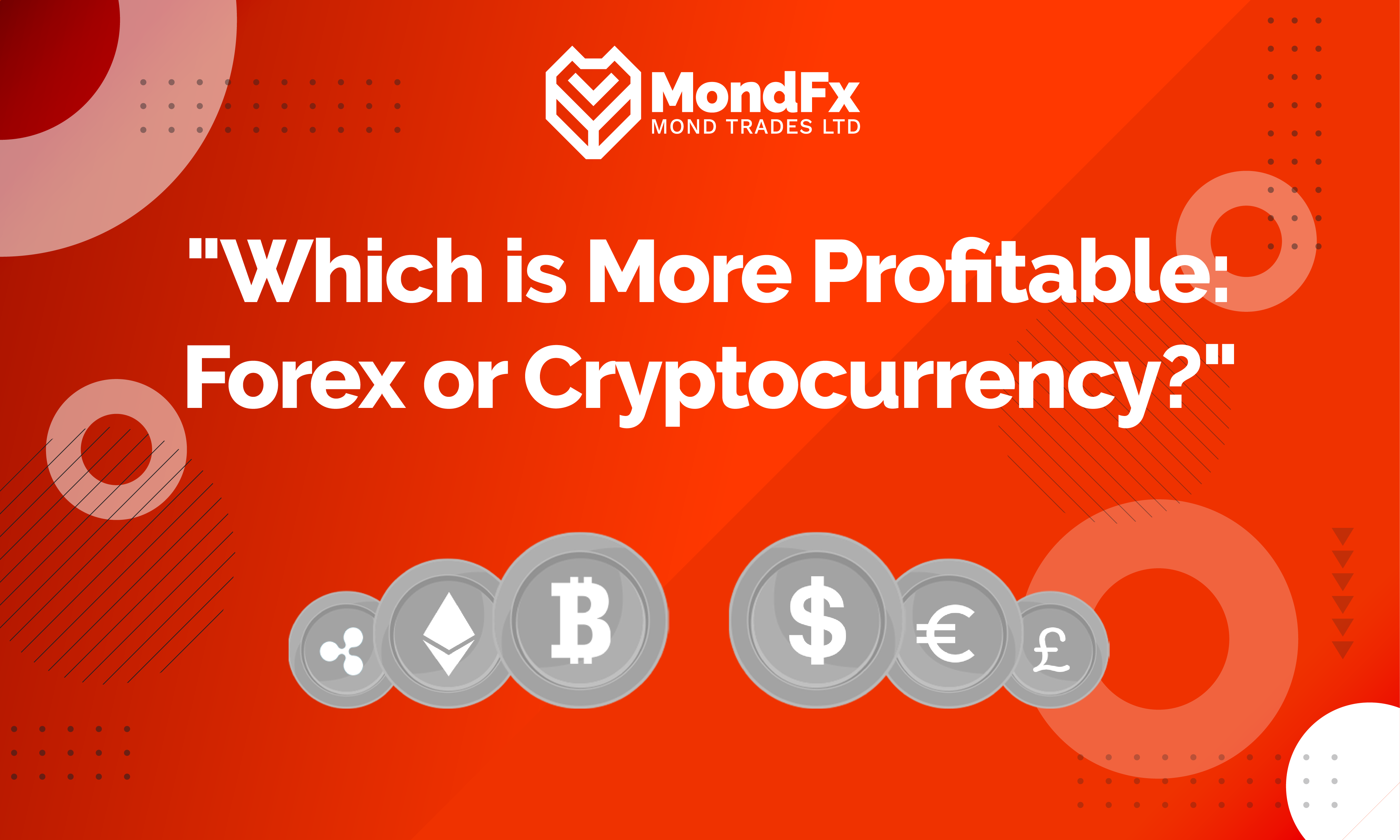Forex and crypto currency markets are two popular areas for investors and traders. These two markets, despite their fundamental differences, each present unique opportunities and challenges. In this article, we will do a comprehensive review and comparison of Forex and crypto currency markets. From basic definitions and history to volatility, risks, trading techniques and profit potential, we carefully delve into every aspect to provide readers with a clear and practical view of these two important markets.
Definition of forex and crypto currency
Forex stands for “Foreign Exchange”. This market is the largest and most liquid financial market in the world, where different currencies of the world are traded. In this market, traders buy and sell currency pairs. Among these currency pairs, we can mention the EUR/USD (Euro to US Dollar) currency pair. Due to the high volume of transactions and high liquidity, Forex offers numerous opportunities for traders to earn profits. The forex market is active 24 hours a day, 5 days a week, which allows traders to trade at any time of the day or night.
On the other hand, Cryptocurrencies are a type of digital assets that use cryptography for financial transactions. Bitcoin is the first and most famous crypto currency that was introduced in 2009 by a person or group with the pseudonym Satoshi Nakamoto. Crypto currencies operate on the basis of Blockchain technology, which quickly gained attention due to the high security and transparency of this technology. Crypto currencies operate in a decentralized manner without the control of central institutions such as banks and governments, which makes them more attractive to investors and traders.
History and growth of markets
The Forex market has a long and complicated history that goes back centuries. However, the modern form of the forex market was formed in the 1970s after the collapse of the Bretton Woods system. The Bretton Woods system, established after World War II, pegged world currencies to the US dollar and the US dollar to gold. With the collapse of this system, currencies became floating rates and the forex market emerged as we know it today. Since then, the forex market has grown steadily to become the world’s largest financial market, with trading volume reaching over $5 trillion per day.
In contrast, the crypto currency market is much newer, with a history of less than two decades. Bitcoin, the first crypto currency, was introduced in 2009 and did not gain significant value until 2010. But gradually and with the growth of public awareness about blockchain technology and the benefits of crypto currencies, the market of these currencies also grew rapidly. In recent years, several crypto currencies such as Ethereum (Ethereum), Ripple (Ripple) and Litecoin (Litecoin) have been introduced, each of which has unique features and applications.
The growth of the crypto currency market has taken place for various reasons. The first reason is the high security and transparency of blockchain, which has won the trust of investors. The second reason is the decentralized nature of these markets and their lack of control by central institutions, which allows more freedom in transactions. The third reason is the high yield potential of these currencies, which has attracted many investors.
On the other hand, the forex market is known as a safe market for investment due to its stability and high liquidity. Due to the high volume of transactions and the presence of banks, financial institutions and governments, this market is at a high level in terms of liquidity and stability. Finally, both the forex and crypto currency markets have their own unique opportunities and challenges. The choice between these two markets depends on the investment goals, risk tolerance and knowledge of the trader. By properly understanding the history and characteristics of these markets, better investment and trading decisions can be made.
Fluctuations and risks
Fluctuations in the forex market
The forex market, as the largest and most liquid financial market in the world, has its own fluctuations. Fluctuations in the forex market are mainly caused by changes in economic and political factors. Factors such as changes in interest rates, inflation rates, gross domestic product (GDP), and geopolitical events can greatly affect the value of currencies. For example, an increase in the interest rate in a country can attract foreign investors and raise the value of that country’s currency. Likewise, political or economic crises can have negative effects on the value of currencies.
The volatility in the forex market is usually lower than in the crypto currency market, but due to the high trading volume and high liquidity, this market still offers many opportunities for profit. Forex traders often use fundamental and technical analysis to predict and manage volatility. Strategies such as trading based on economic news, using price charts and technical indices help traders identify appropriate entry and exit points.
Fluctuations in the crypto currency market
The crypto currency market is much more volatile than the forex market due to its nascent nature and lack of complete stabilization. These fluctuations often occur due to news and rumors, changes in laws and regulations, hacks and security incidents, and changes in technology. For example, government announcements about new laws related to crypto currencies can cause extreme price fluctuations. Also, hacking attacks on trading platforms or digital wallets can cause sudden price drops.
High volatility in the crypto currency market can provide great opportunities for profit, however, it also entails numerous risks. Crypto currency traders must constantly monitor the market and use special strategies such as stop loss and take profit to manage risk. The use of technical and fundamental analysis is also very important in this market, but due to extreme fluctuations, traders should monitor the market more carefully.
Compare the risks associated with each market
The risks in the forex market and crypto currency market are different for several reasons. In the forex market, risks are mainly caused by economic and political changes. This market is at a high level in terms of liquidity and transparency due to the high volume of transactions and the strict supervision of financial institutions. But there are still risks related to changes in interest rates, inflation, and geopolitical events that can have serious effects on the value of currencies.
On the other hand, the crypto currency market has more risks due to its nascent nature and lack of central supervision. Extreme price fluctuations, cyber security, and changes in laws and regulations are among the main risks of this market. Also, lack of public acceptance and lack of technological stability can also be considered as risk factors in this market. However, the potential for high returns in this market can be attractive to some investors.
Ultimately, the choice between the forex market and the crypto currency market depends on one’s risk tolerance and investment goals. The forex market may be more suitable for more conservative investors due to its stability and high liquidity, while the crypto currency market, with its high volatility and high return potential, may be more attractive to more risk-averse investors. Traders should choose appropriate strategies to manage risks and maximize their profits by fully understanding the risks and volatility of each market.

Comparison of profitability potential and factors affecting it in forex and crypto currencies
An examination of the average annual returns in forex and crypto currencies shows that both markets have significant profit potential, but with significant differences. The forex market offers more relative stability, with a daily trading volume of more than $6.6 trillion. Average annual returns in forex for professional traders can be between 10% and 20%, although this figure can be much lower for novice traders.
In contrast, the crypto currency market shows the potential for much higher returns. Some crypto currencies have experienced returns of several hundred percent or even thousands of percent in certain periods. However, these exceptional returns come with much higher risk and are not sustainable.
Analyzing price fluctuations plays a key role in understanding the profitability potential of both markets. The forex market usually experiences less volatility due to high trading volume and high liquidity. This relative stability allows traders to make small but consistent profits using more accurate analysis. In contrast, the cryptocurrency market is known for its extreme volatility. These fluctuations can lead to big profits in the short term, but at the same time, it also carries the risk of heavy losses.
A comparison of the short- and long-term profit opportunities in both markets shows that Forex is more suitable for short- and medium-term trading. Forex traders often use scalping, day trading or swing trading strategies. In contrast, the cryptocurrency market offers both short-term and long-term opportunities. Some investors hold cryptocurrencies as long-term assets, while others take advantage of extreme volatility to make short-term gains.
In examining the factors affecting profitability, the role of trading leverage in forex is very prominent. Leverage allows traders to make a larger volume of trades with less capital. This can significantly increase profitability, but at the same time increases the risk of loss. In the cryptocurrency market, although some exchanges offer leverage, its use is less common.
The impact of news and events on prices is significant in both markets, but its nature is different. In forex, economic indices, central bank decisions and geopolitical events play a key role. In the cryptocurrency market, in addition to these factors, news about wider adoption, technological changes and even celebrity tweets can have a major impact on prices.
The role of technology and innovation in the profitability of crypto currencies is very prominent. Technological advances such as smart contracts, second-layer technologies and non-fungible tokens (NFTs) have created new opportunities for profitability. These innovations not only increase the inherent value of some crypto currency projects, but also introduce new ways to earn money, such as staking and yield farming.
All in all, comparing the profitability potential of forex and crypto currencies shows that both markets offer unique opportunities. Forex, with its greater stability and lower risk, is suitable for more conservative traders, while the crypto currency market, with its higher profit potential and higher risk, appeals to more risk-averse investors. The choice between these two markets should be made based on each person’s financial goals, risk tolerance and specialized knowledge.

Profitability comparison
Short term profit in forex
Short-term profit in the forex market is one of the most popular trading methods due to moderate volatility and high liquidity. Short-term traders, known as “day traders” or “scalpers,” take advantage of small price changes throughout the day. These changes may occur due to economic news, interest rate changes or geopolitical events.
The benefits of short-term profit in forex include:
High liquidity: Due to the high volume of transactions, the forex market has very high liquidity, which allows traders to enter and exit transactions quickly.
Continuous opportunities: Due to the 24-hour activity of the forex market, five days a week, traders constantly find new opportunities to make profits.
Leverage: Many forex brokers offer high leverage that allows traders to make more transactions with less capital and thus earn more profit.
However, short-term traders should be aware that the use of high leverage can also involve a lot of risk and requires careful risk management.
Short term profit in crypto currency
Short-term profitability in the crypto currency market can be very profitable due to the extreme volatility and decentralization of this market. Short-term traders in crypto currency often use trading methods such as scalping or day traders, which are based on rapid and extreme price fluctuations.
The advantages of short-term profitability in crypto currency include:
High Volatility: Extreme volatility in the crypto currency market can provide great profit opportunities.
Easy access: The cryptocurrency market is open 24 hours a day, 7 days a week, which allows traders to trade at any time of the day or night.
Diverse Opportunities: The existence of thousands of different crypto currencies provides traders with multiple opportunities to profit from price changes.
However, high volatility in the crypto currency market can also bring many risks and requires careful risk management and continuous analysis.
Long term profit in forex
Long-term profitability in the forex market is usually based on fundamental analysis and long-term economic trends. Long-term investors in forex often seek to preserve and increase the value of their capital over time, ignoring short-term fluctuations.
The benefits of long-term profitability in forex include:
Relative stability: The forex market is usually more stable due to high liquidity and strict supervision of financial institutions.
Fundamental analysis: Using fundamental analysis can help investors identify the inherent value of currencies and make longer-term decisions.
Hedging: Long-term investors can use financial instruments such as futures contracts and options to hedge their risks.
However, long-term forex investing requires patience and careful economic analysis, and may face challenges due to unexpected economic and political changes.
Long-term profitability in crypto currency
Long-term profitability in the crypto currency market can be very attractive due to its high growth potential. Long-term investors in crypto currency seek to increase the value of their assets over time, ignoring short-term volatility.
The benefits of long-term profitability in crypto currency include:
High growth potential: The crypto currency market has a very high growth potential due to its nascent nature and increasing acceptance.
Diversification of assets: The existence of thousands of different crypto currencies with diverse uses provides numerous opportunities for long-term investment.
Blockchain technology: Greater adoption and use of blockchain technology can increase the value of crypto currencies over time.
However, long-term investment in crypto currency also comes with many risks. Extreme fluctuations, changes in laws and regulations, and cyber security are among the main challenges of this market. Investors should enter this market with due care and research and manage the related risks.
Ultimately, the choice between short-term or long-term investment in the forex market and crypto currency depends on the goals, risk tolerance and knowledge of the investor. Both markets have their own profitable opportunities and challenges, and investors should make more informed decisions by fully understanding these markets and using proper analysis.

Advantages and disadvantages of forex trading and crypto currencies
Advantages of forex trading:
- High liquidity: The forex market is the most liquid financial market in the world with a daily trading volume of more than 6 trillion dollars. This high liquidity allows traders to easily enter and exit trades without significantly affecting prices. This feature makes the spread (the difference between the buying and selling price) in major currency pairs very small, which in turn reduces trading costs.
- Relative stability: Compared to emerging markets such as crypto currencies, the forex market has more relative stability. This stability is due to the high volume of transactions and the large number of participants in the market. Price fluctuations in forex are usually more gradual and predictable, which allows traders to adopt longer-term strategies.
- Trading leverage: One of the main advantages of forex is the possibility of using high trading leverage. This feature allows traders to make a larger volume of trades with less capital. For example, with a leverage of 1:100, a trader can make $100,000 worth of trades with $1,000 of capital. This increases the potential for profitability significantly, although it also increases the risk accordingly.
Disadvantages of forex trading:
- Complexity of the market: The forex market is very complex due to the multitude of factors influencing the price of currencies. Factors such as monetary policies of central banks, economic indices, geopolitical tensions and even rumors can affect the exchange rate. Understanding and analyzing all these factors requires considerable knowledge and experience.
- Higher initial capital requirement: Although it is possible to enter the market with little capital using leverage, forex trading usually requires more initial capital than some other markets. This can be a barrier to entry for novice or low-capital traders.
Advantages of crypto currency trading:
- High profit potential: The crypto currency market has a very high profit potential due to the extreme price fluctuations. In some cases, the value of some crypto currencies has multiplied in a short period of time. This high profit potential is very attractive to risk-taking investors.
- Lower barriers to entry: Entering the cryptocurrency market is relatively simple. With a small amount and through online exchanges, people can easily start buying and selling crypto currencies. This ease of access has attracted a large number of retail investors to this market.
- Decentralization: Many crypto currencies are based on blockchain technology and operate in a decentralized manner. This feature means that the control of their price and supply is not in the hands of a central institution. For some investors, this independence from traditional financial systems is a huge advantage.
Disadvantages of crypto currency trading:
- Extreme volatility: Although extreme volatility can lead to high profits, it also carries the risk of heavy losses. The price of crypto currencies can drop drastically in a short period of time, which can be very challenging for inexperienced or risk-averse investors.
- High risk: In addition to price fluctuations, there are other risks in this market such as hacking of exchanges, scams and fake projects. Also, since many crypto currency projects are fledgling, there is also the risk of failure and complete loss of investment value.
- Lack of supervision: The crypto currency market has less supervision and regulation compared to traditional financial markets. Although this leads to greater freedom of action, it also increases the risk of fraud and abuse. The lack of strong protection mechanisms for investors can make it difficult to recover damages if something goes wrong.
All in all, both the forex and crypto currency markets offer unique opportunities, but come with their own risks. The choice between the two should be made based on each person’s financial goals, risk tolerance and specialized knowledge.
Diversification opportunities
Combination of forex and crypto currency strategies
Combining trading strategies in the Forex and crypto currency markets can help investors benefit from the benefits of both markets and diversify their risks.
Advantages:
Diversification in sources of returns: The forex market and crypto currency both have unique profit opportunities. Combining the two can help investors tap into different sources of returns.
Risk reduction: By distributing capital in two different markets, the risks associated with the fluctuations of each market are reduced. For example, when the forex market fluctuates due to geopolitical changes, the crypto currency market may not be affected, and vice versa.
Use of various strategies: In forex, you can use technical and fundamental strategies, while in crypto currency, you can take advantage of technology-based analysis and general acceptance. Combining these strategies can help improve overall portfolio performance.
Disadvantages:
More complexity: managing two different markets at the same time requires more knowledge and experience, which may be challenging for some investors.
Higher costs: Trading fees and the need for different software and platforms can add additional costs to investors.

The benefits of diversification in the investment portfolio
Diversification is one of the basic principles of capital management, which helps to reduce risk and increase potential returns.
Advantages:
Risk reduction: By distributing capital in various assets, the risks associated with the fluctuations of each asset are reduced. This means reducing the possibility of large losses if the price of a particular asset falls.
Improved returns: Diversification helps investors to exploit profitable opportunities in different markets. This can improve the overall performance of the investment portfolio.
Hedging Against Market Fluctuations: By having a diversified portfolio, investors can be protected against market fluctuations. For example, when the stock market is bearish, the bond market or gold may perform better.
Disadvantages:
Complexity of management: Managing a diversified portfolio requires more knowledge and experience and may require more sophisticated analysis and ongoing monitoring.
Additional costs: Diversification may incur additional costs such as trading fees and portfolio management fees.
Future trends and their impact on profitability
The future predictions of the forex market and crypto currencies indicate significant changes in both areas. In the forex market, advanced technologies such as artificial intelligence and machine learning are expected to play a more prominent role in market analysis and trade execution. This can lead to increased efficiency and accuracy in trading, but at the same time make it more difficult for traditional traders to compete.
In the field of crypto currencies, the main trend is towards wider adoption and integration with traditional financial systems. Emerging technologies such as DeFi (decentralized finance) and Web3 are expected to have a profound impact on market structure. These developments can create new profitable opportunities, but at the same time they will also bring new challenges for investors.
The impact of the new rules and regulations on the profitability potential in both markets will be significant. In the forex market, stricter leverage and consumer protection regulations are expected. This can limit profitability for some traders, but at the same time it will help the market to be more stable.
In the crypto currency market, the trend is towards more regulation and clearer legal frameworks. This can lead to a reduction in extreme volatility and increase the confidence of institutional investors. Although it may limit some short-term profitability opportunities, it can contribute to the sustainable and long-term growth of the market.
Also, more convergence is expected to occur between the forex and crypto currency markets. This can create new opportunities for arbitrage and cross-market trading strategies.
Ultimately, profitability in both markets will depend on the ability of traders and investors to adapt to these changes. Those that can take advantage of new technologies and adapt to new regulations are likely to be more successful. At the same time, the importance of risk management and continuous education will increase even more.
For Iranian traders interested in entering the global forex market, MondFX broker is a reliable and efficient option. By providing various services, Persian support and suitable conditions for Iranian users, MondFX provides a safe and effective way to operate in Forex. To start your trading, visit the official MondFX website.
Conclusion:
Both the forex and crypto currency markets offer unique opportunities for investment and profit, but each comes with its own risks and challenges. The forex market, with its high liquidity and relative stability, appeals to more conservative traders, while the crypto currency market, with its higher profit potential and technological innovations, suits more risk-averse investors. Due to future trends, including technological advances and regulatory changes, success in both markets requires flexibility, ongoing training and careful risk management. Combining the strategies of both markets and diversifying the investment portfolio can be an effective way to optimize profit and reduce risk.



